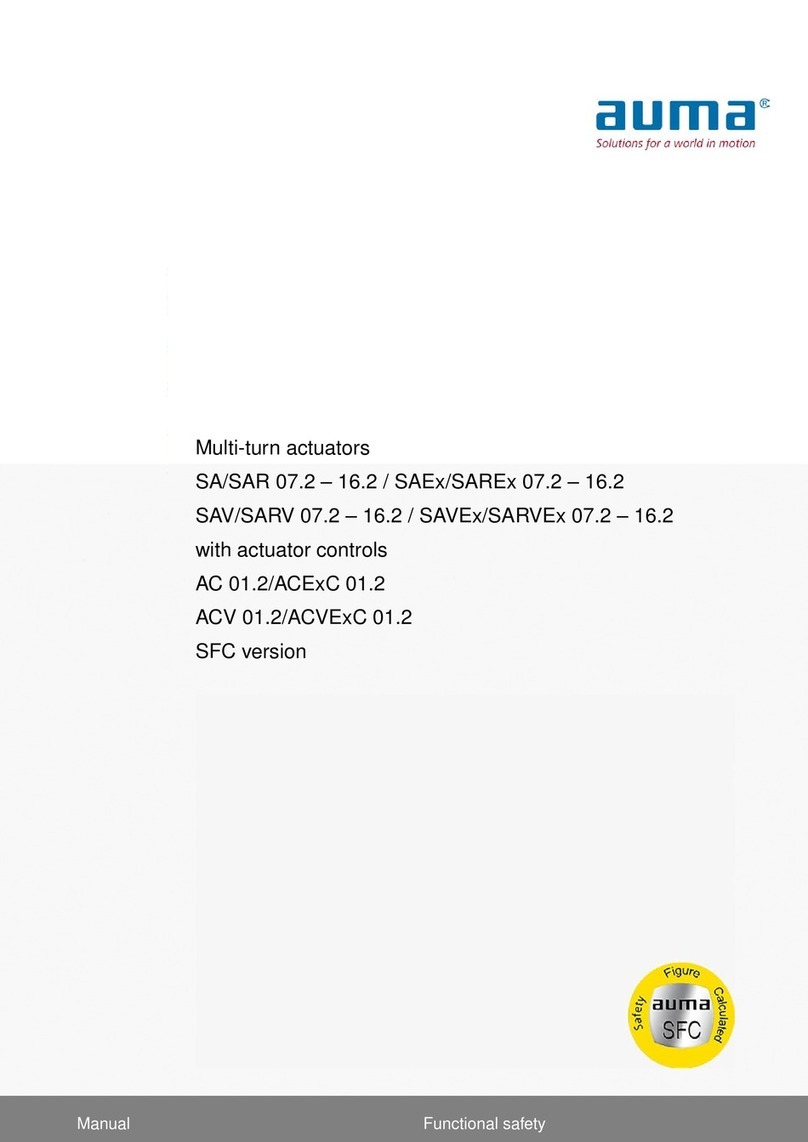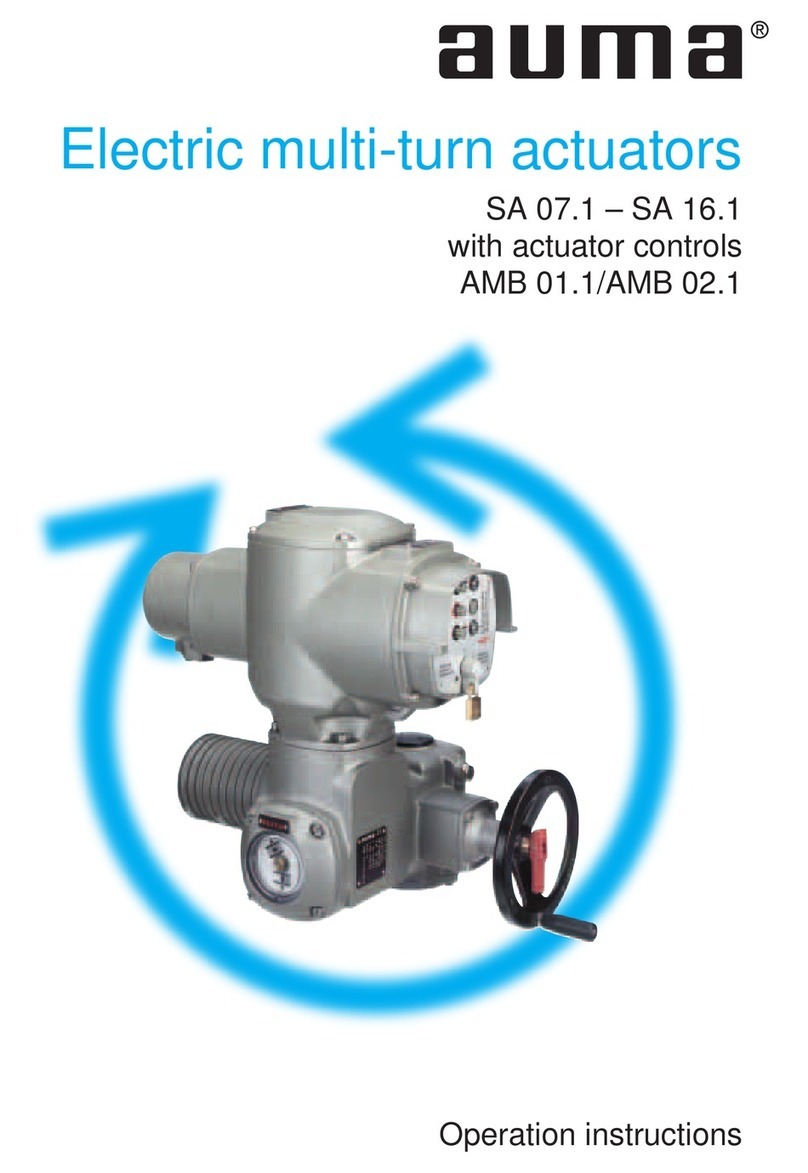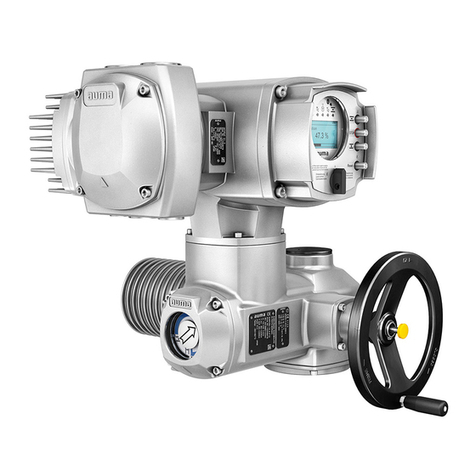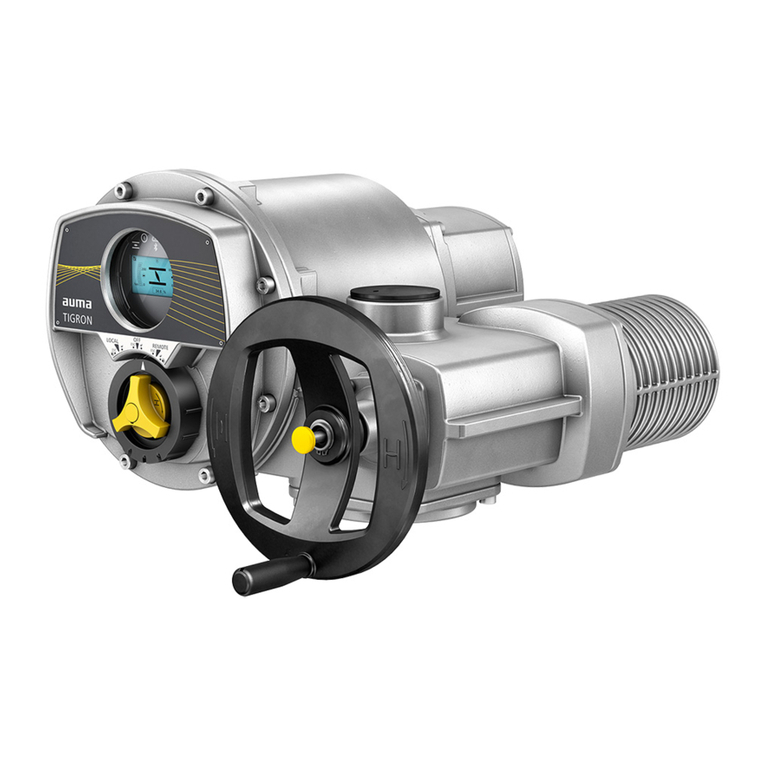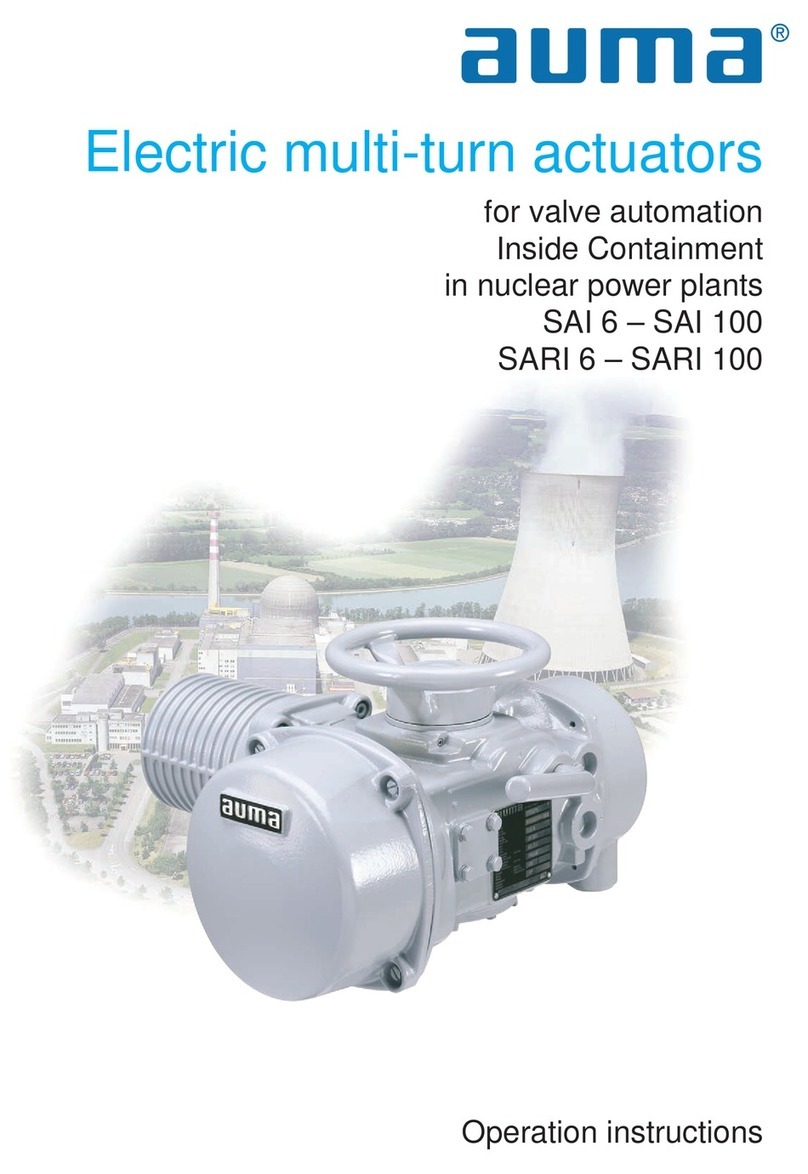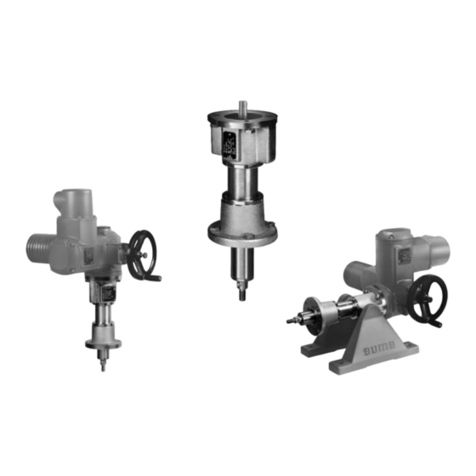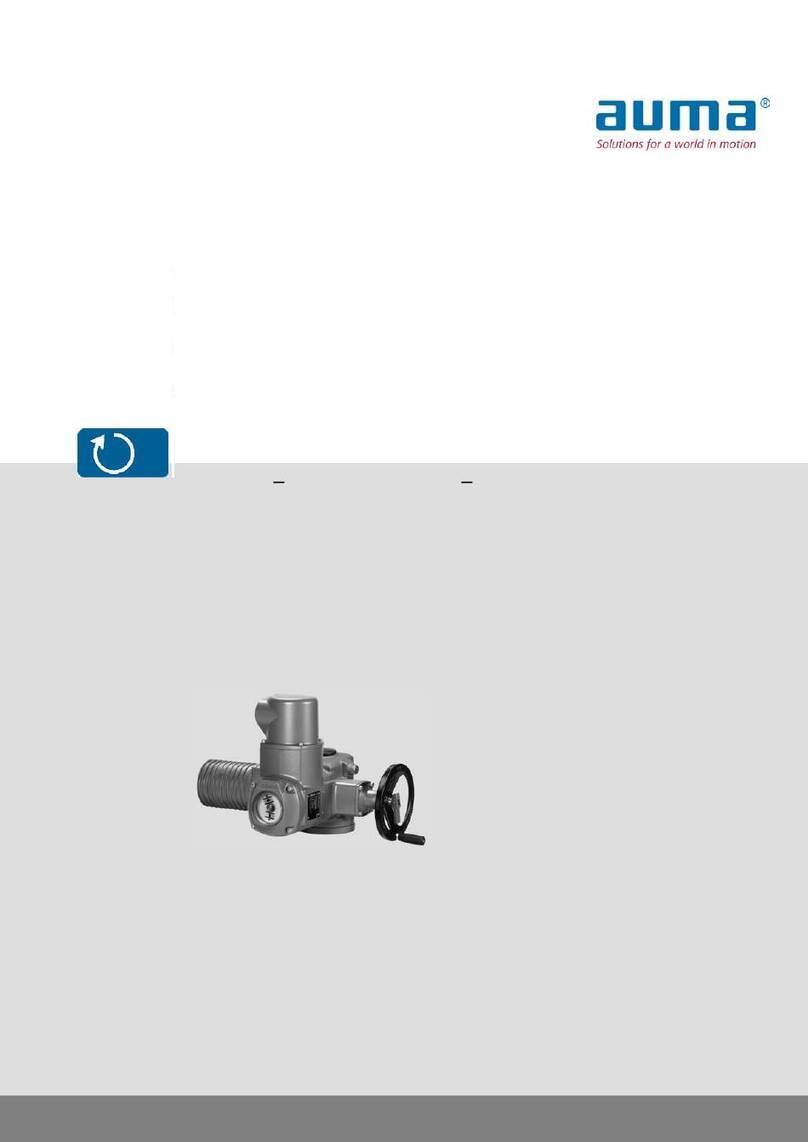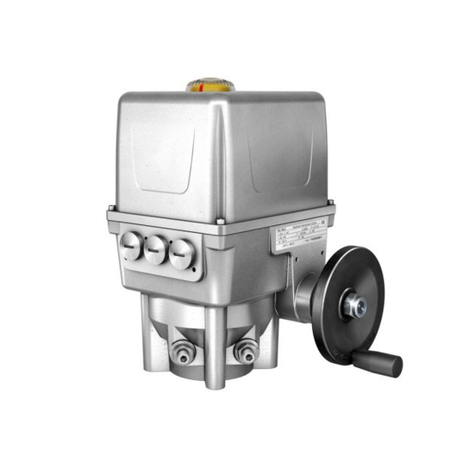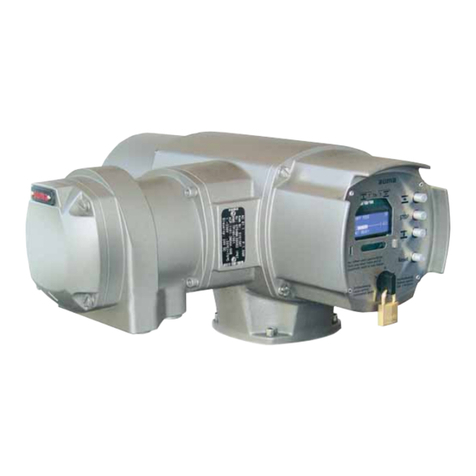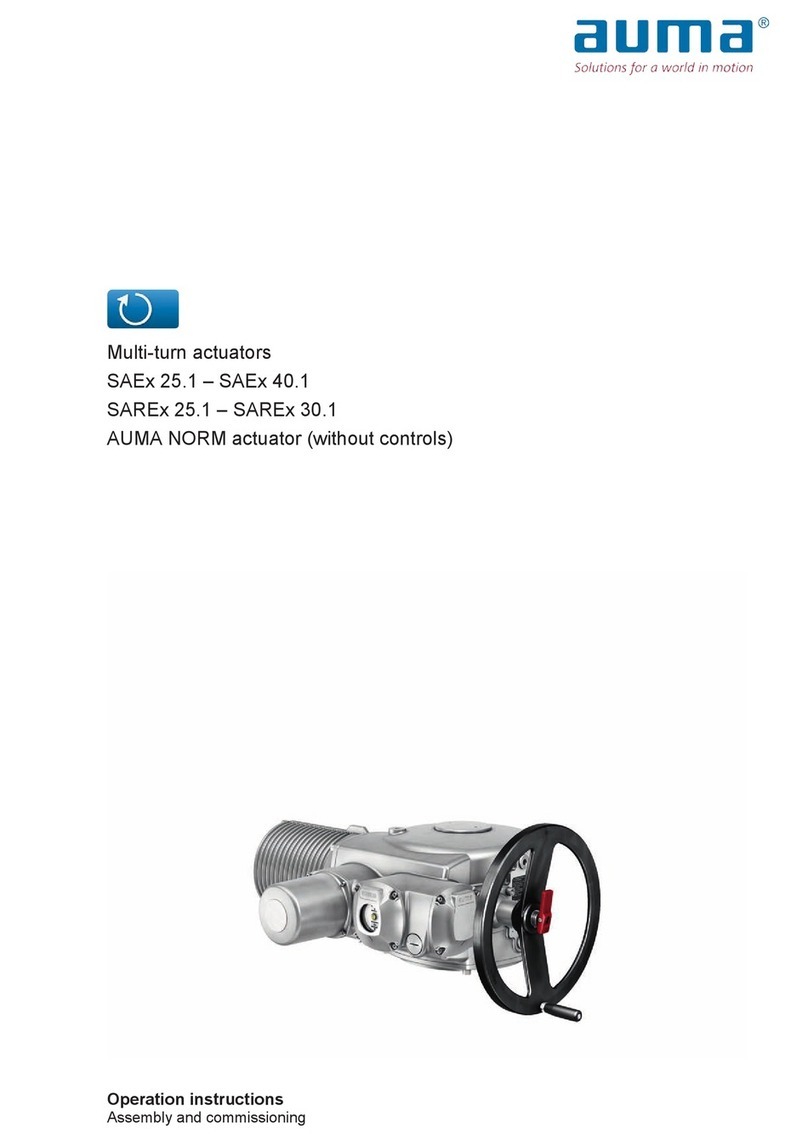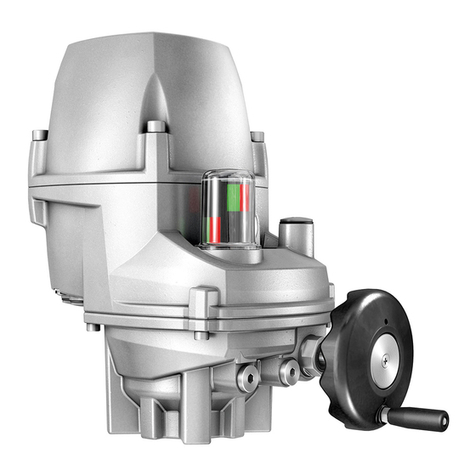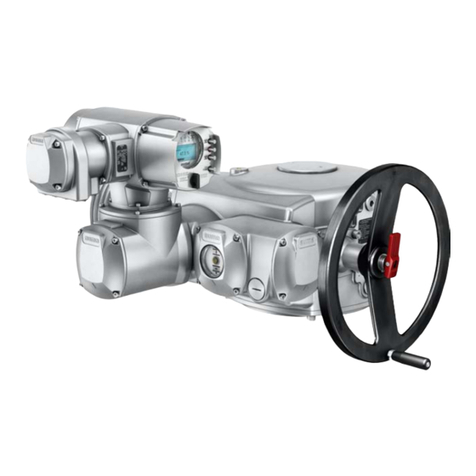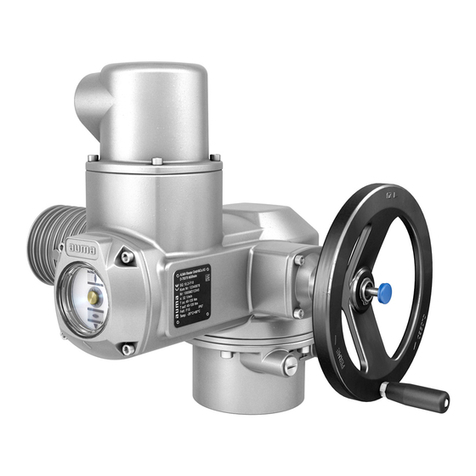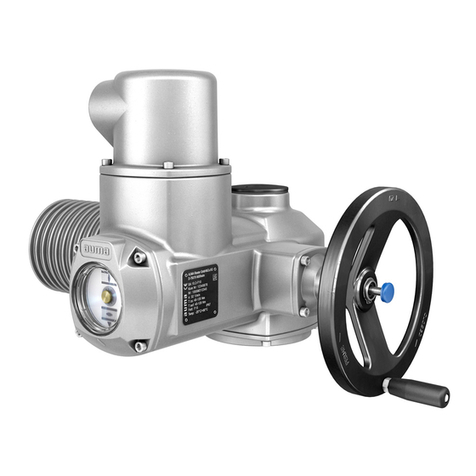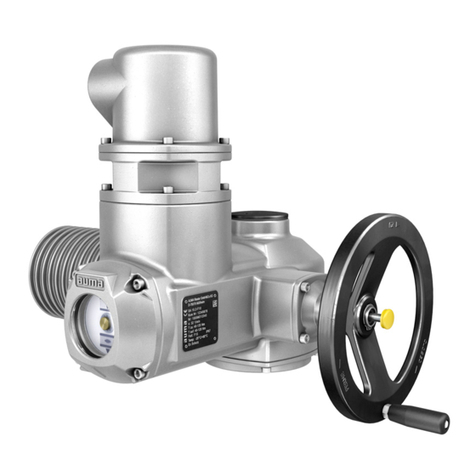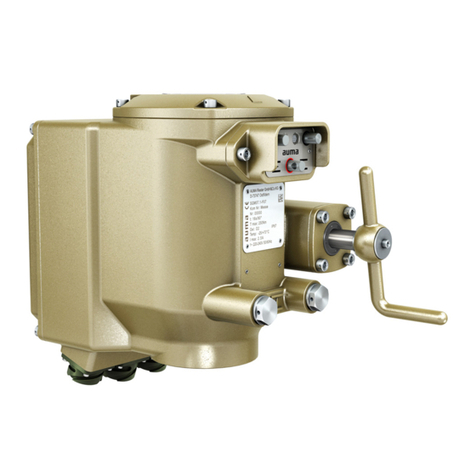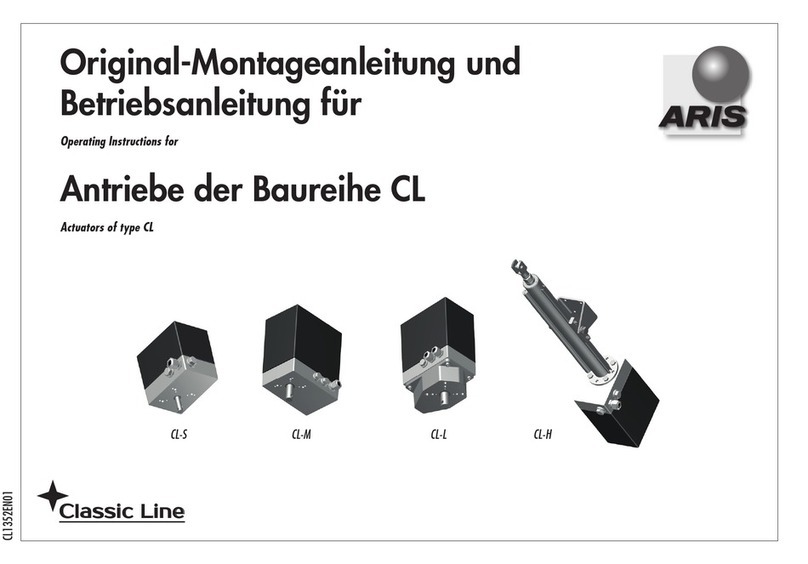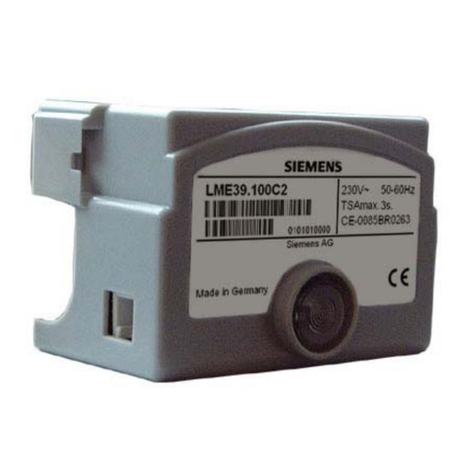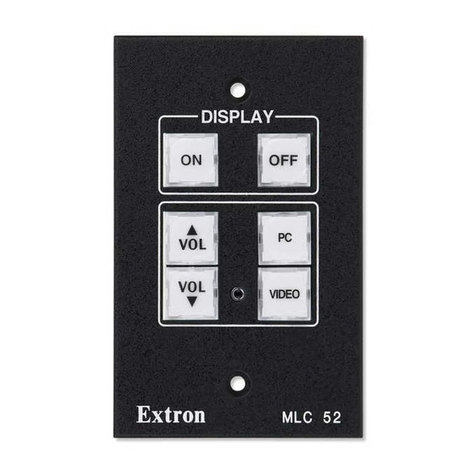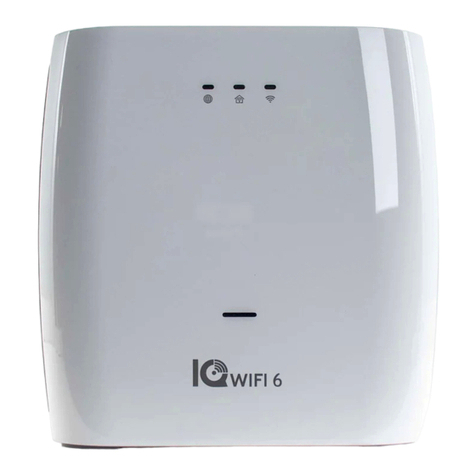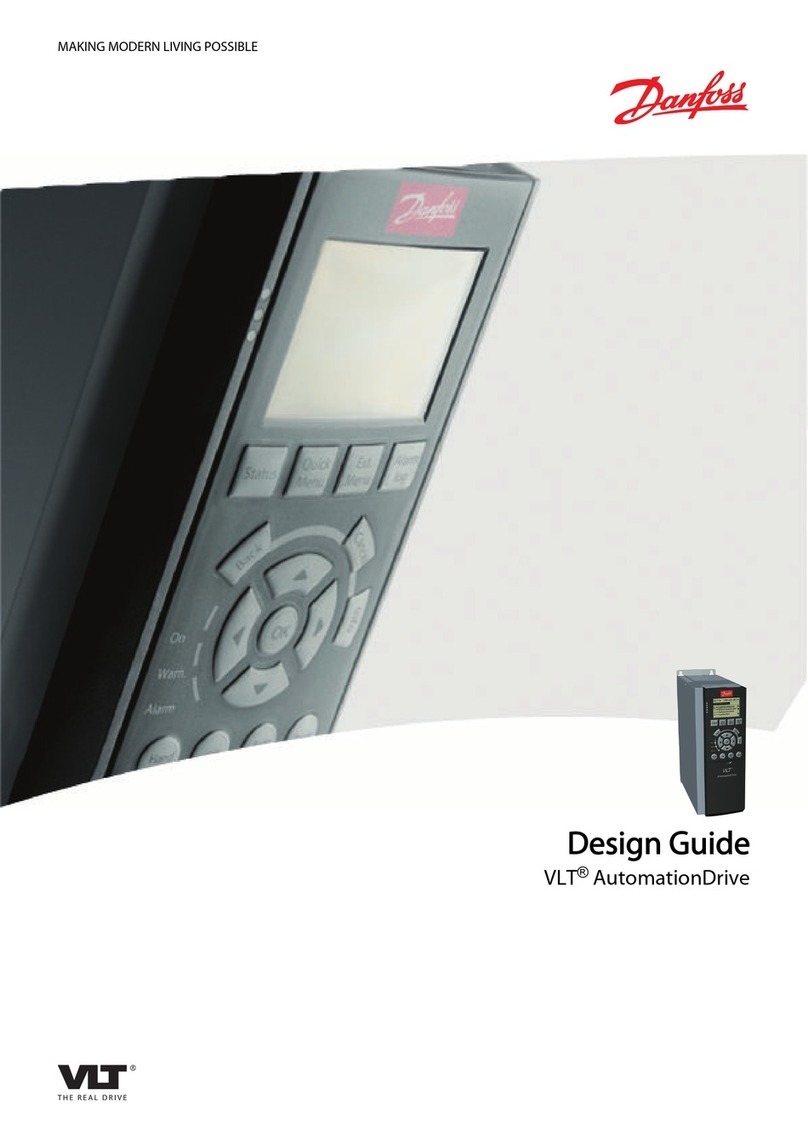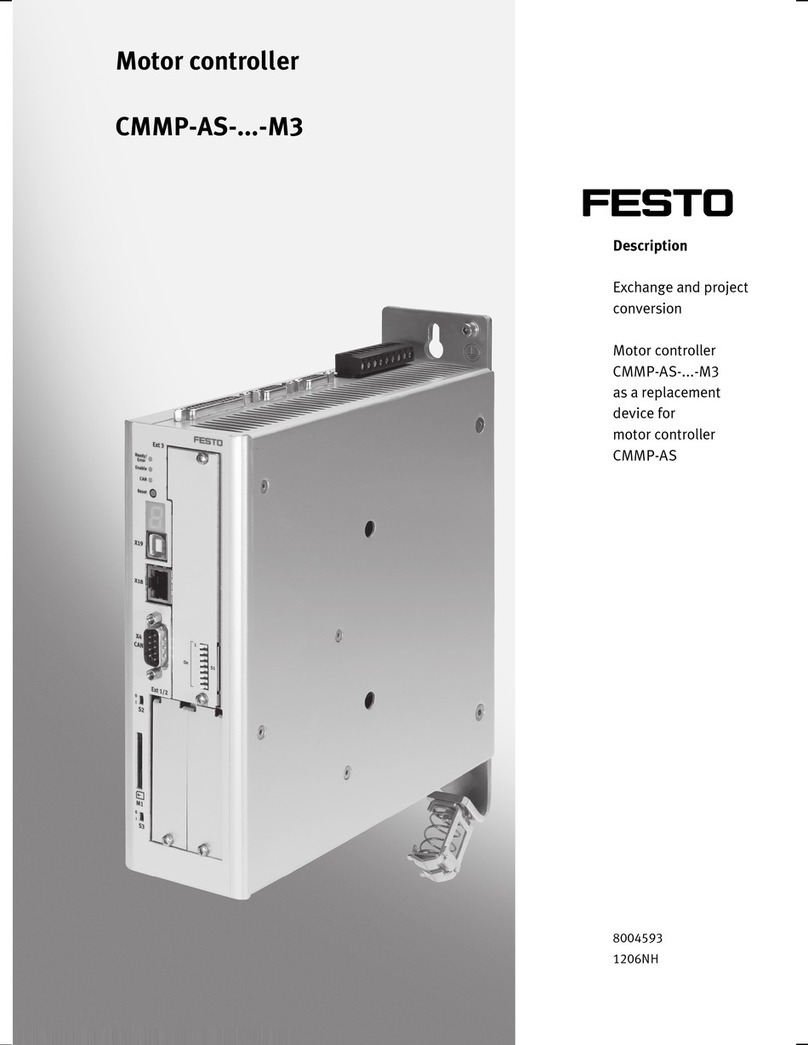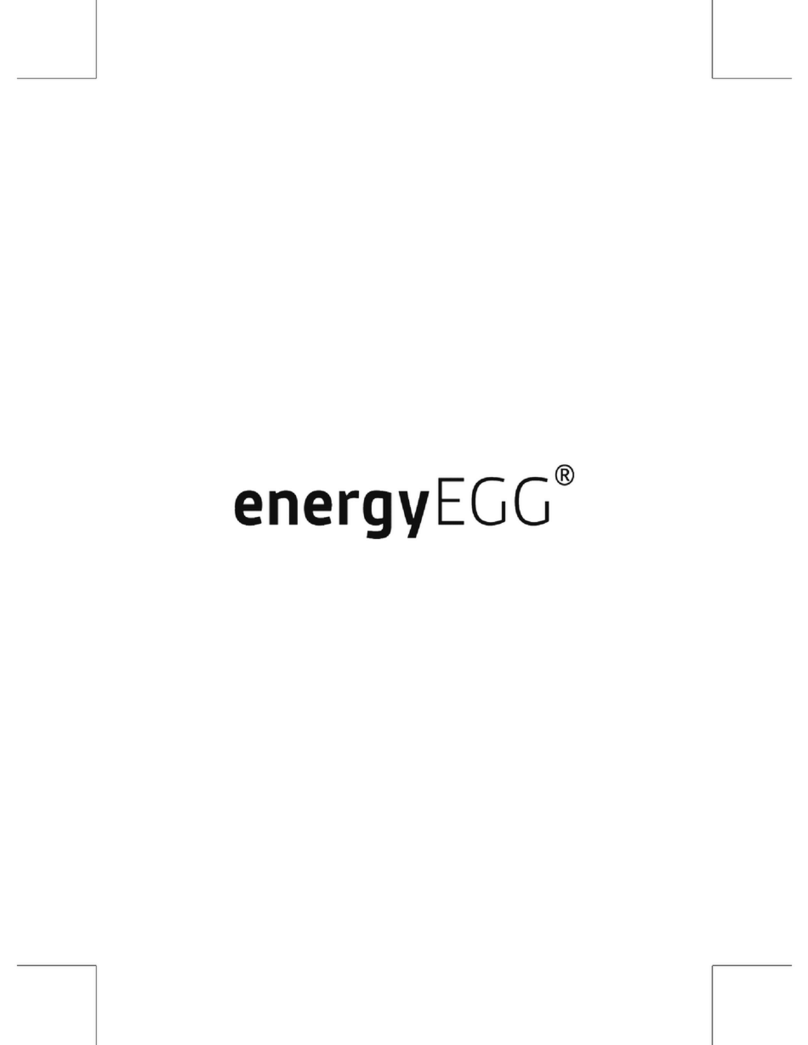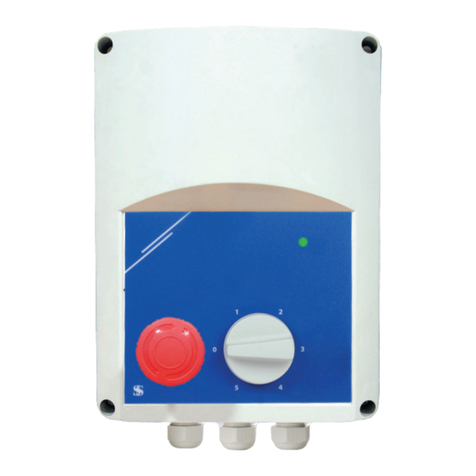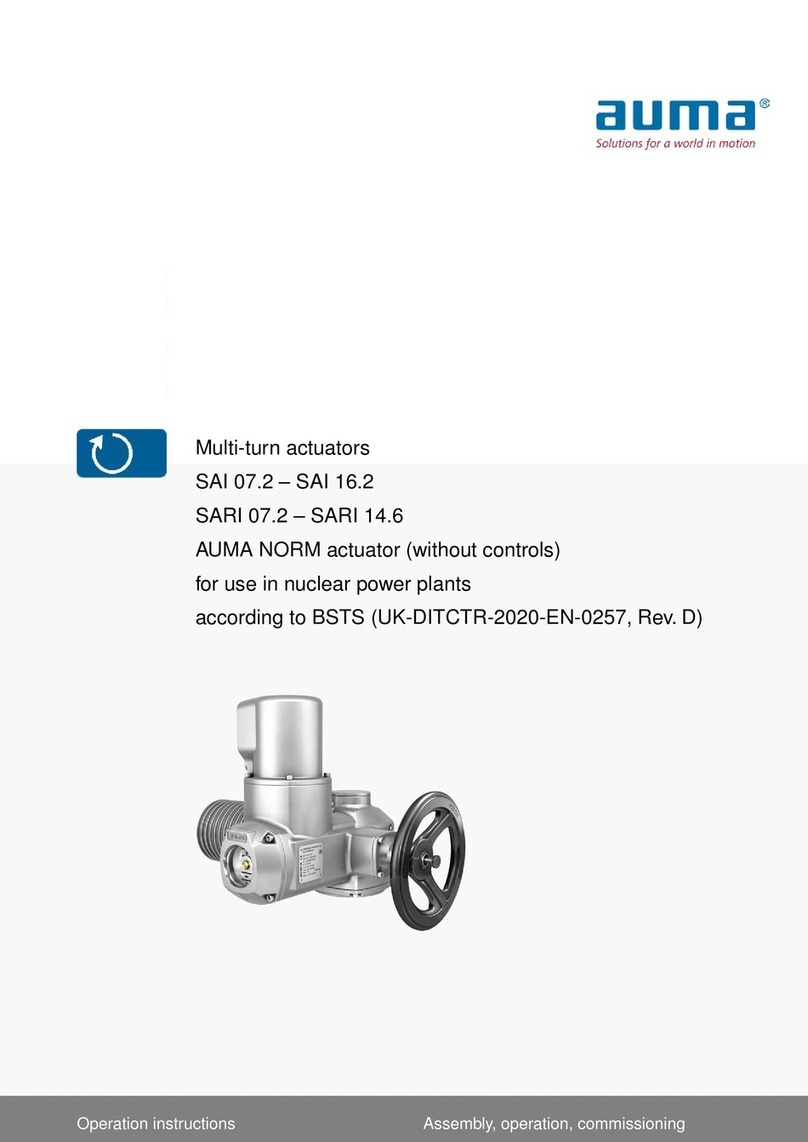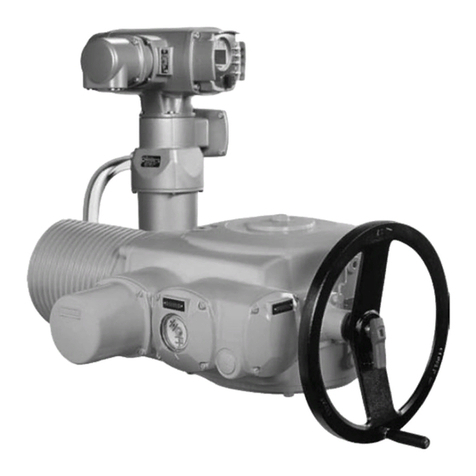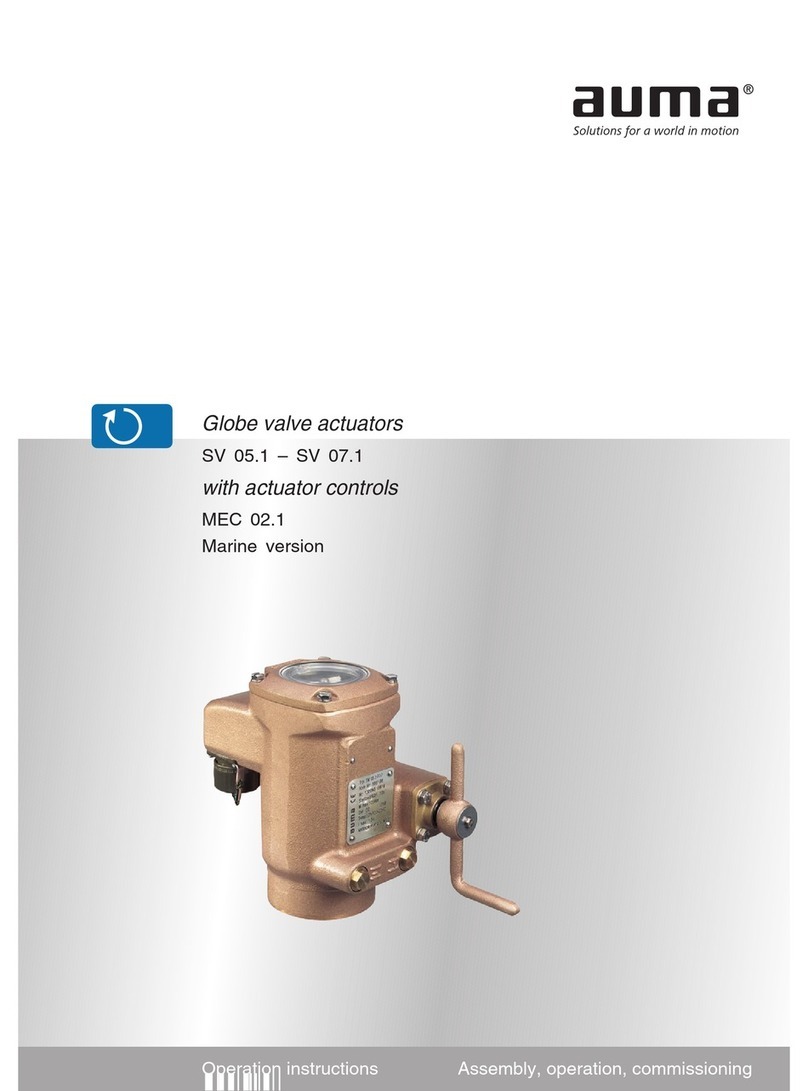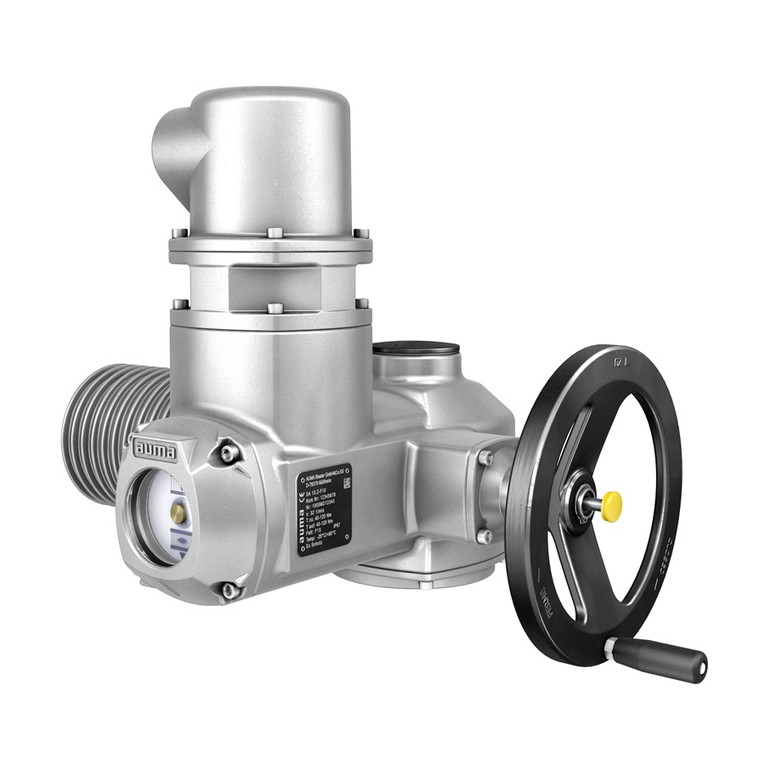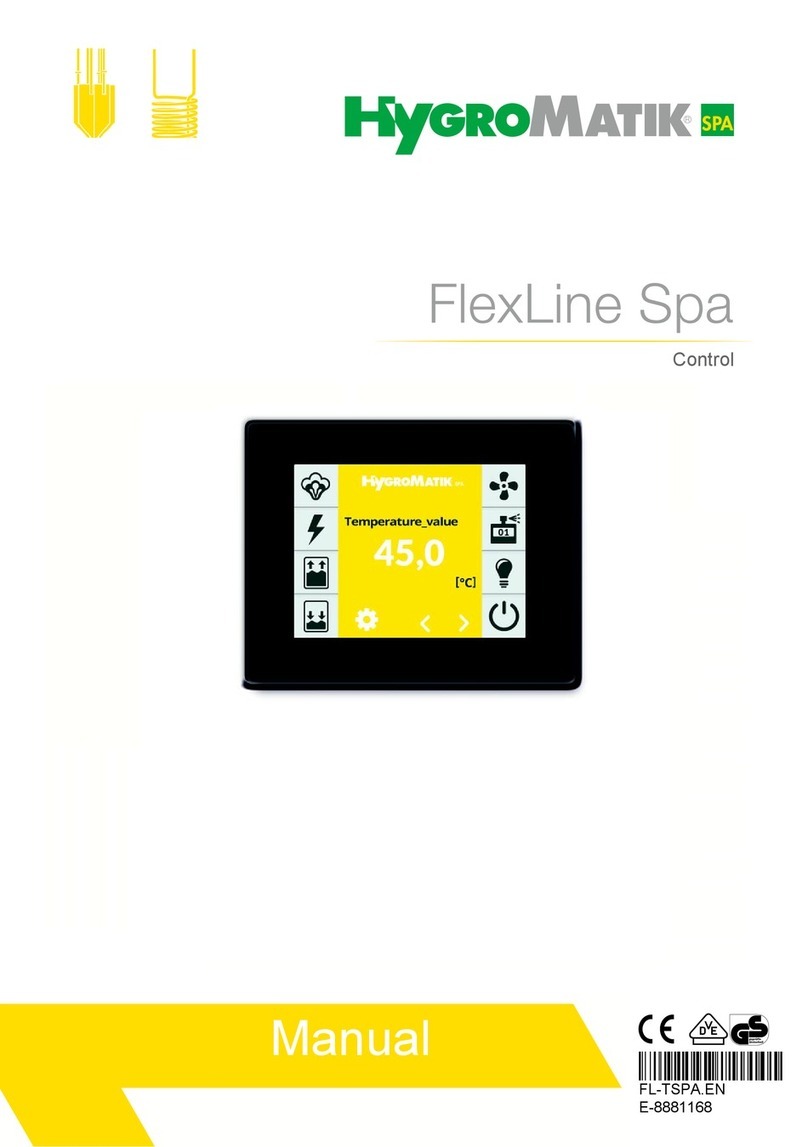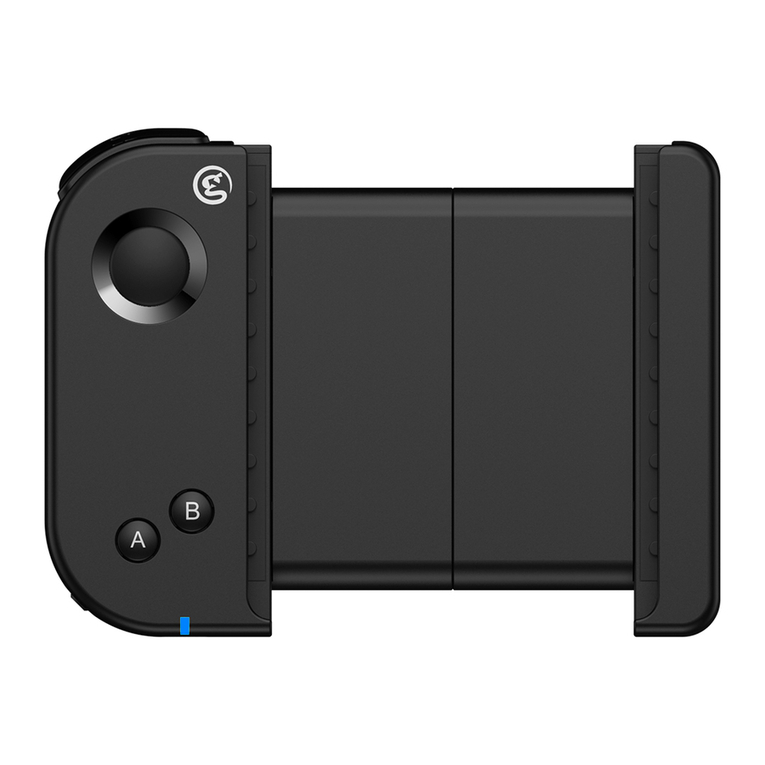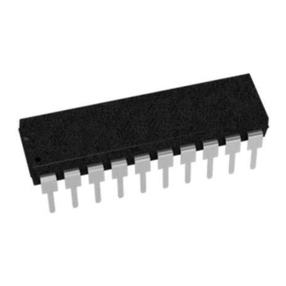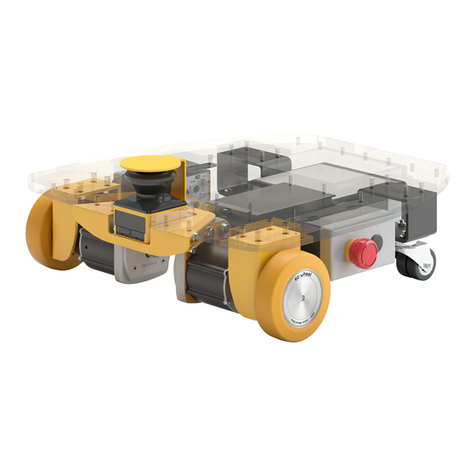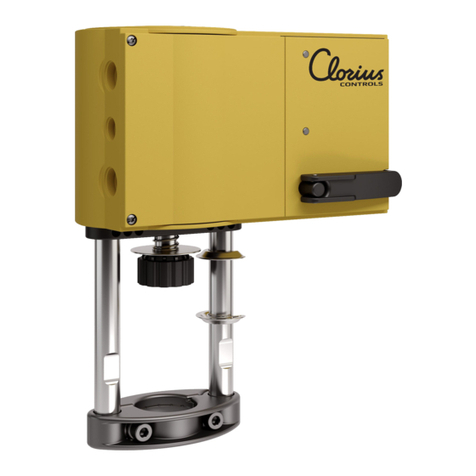
3. Technical data
Part-turn actuators AUMA NORM require external controls. AUMA offers actuator controls AUMA MATIC AM or AUMATIC AC.
These can also easily be mounted to the actuator at a later date.
Features and functions
Type of duty 1) SG: Short time duty S2 - 15 min
SGR: Intermittent duty S4 - 25 %
Motors Standard: 3-ph AC asynchronous motor, type IM B9 according to IEC 34 (SG and SGR)
Options: 1-phase AC motor
DC shunt motor (SG only)
Insulation class Standard: F, tropicalized
Option: H, tropicalized (3-phase AC motors only)
Motor protection Standard: Thermoswitches (NC)
(DC motors without motor protection)
Option: PTC thermistors (according to DIN 44082)
Self-locking yes
Swing angle Standard: 80° to 110° adjustable between min. and max. value.
Options: 30° – 40°, 40° – 55°, 55° – 80°, 110° – 160°, 160° – 230° or 230° – 320°
Limit switching Counter gear mechanism for end positions CLOSED and OPEN
Standard: Tandem switch (2 NC and 2 NO) for each end position
Options: Single switch (1 NC and 1 NO) for each end position
switches galvanically isolated
Triple switch (3 NC and 3 NO) for each end position,
switches galvanically isolated
Intermediate position switch (DUO limit switching),
available for any intermediate position
Torque switching infinitely adjustable torque switching for direction OPEN and CLOSE
Standard: Single switch (1 NC and 1 NO) for each direction
Options: Tandem switch (2 NC and 2 NO) for each direction, switches galvanically isolated
Non-intrusive setting (option) Magnetic limit and torque transmitter MWG
(only possible in combination with actuator controls AUMATIC)
Position feedback signal,
analogue (options) Potentiometer or 0/4 – 20 mA (RWG)
For further details see separate data sheet
Torque feedback signal,
analogue (option) Only in combination with magnetic limit and torque transmitter MWG and controls
AUMATIC AC
Mechanical position indicator Continuous indication, adjustable indicator disc with symbols OPEN and CLOSED
Running indication (option) Blinker transmitter
Heater in switch compartment Standard: self-regulating PTC heater, 5 – 20 W, 110 – 250 V AC/DC
Options: 24 – 48 V AC/DC or 380 – 400 V AC
A resistance type heater (5 W, 24 V DC) is installed within the actuator in combination with
the actuator controls AM or AC.
Motor heater (option) 12.5 W
Manual operation Manual drive for setting and emergency operation, handwheel does not rotate during
electrical operation.
Option: Handwheel lockable
Electrical connection Plug/socket connector with screw type connection
Threads for cable glands Standard: NPT-threads
Options: Pg-threads, NPT-threads, G-threads
Terminal plan KMS TP 100/001 (basic version with 3-phase AC motor)
Splined coupling for connection
to the valve shaft Standard: Coupling without bore
Options: Machined coupling with bore and keyway, square bore or bore with two-flats
according to EN ISO 5211
Valve attachment Dimensions according to EN ISO 5211
1) Based on 68 °F ambient temperature and at an average load with running torque.
For 1-phase AC motors, please note: When reversing, a pause of at least 100 ms is required.
Part-turn actuators SG 05.1 – SG 12.1 / SGR 05.1 – SGR 12.1
Operation instructions AUMA NORM




















